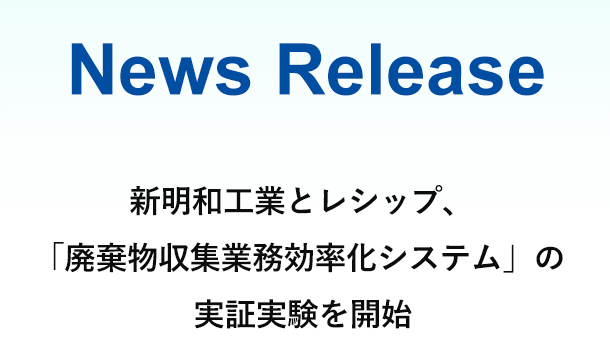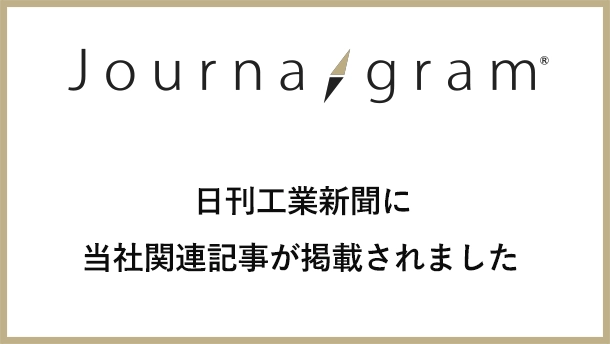[Series] How the US-2 is made (5)
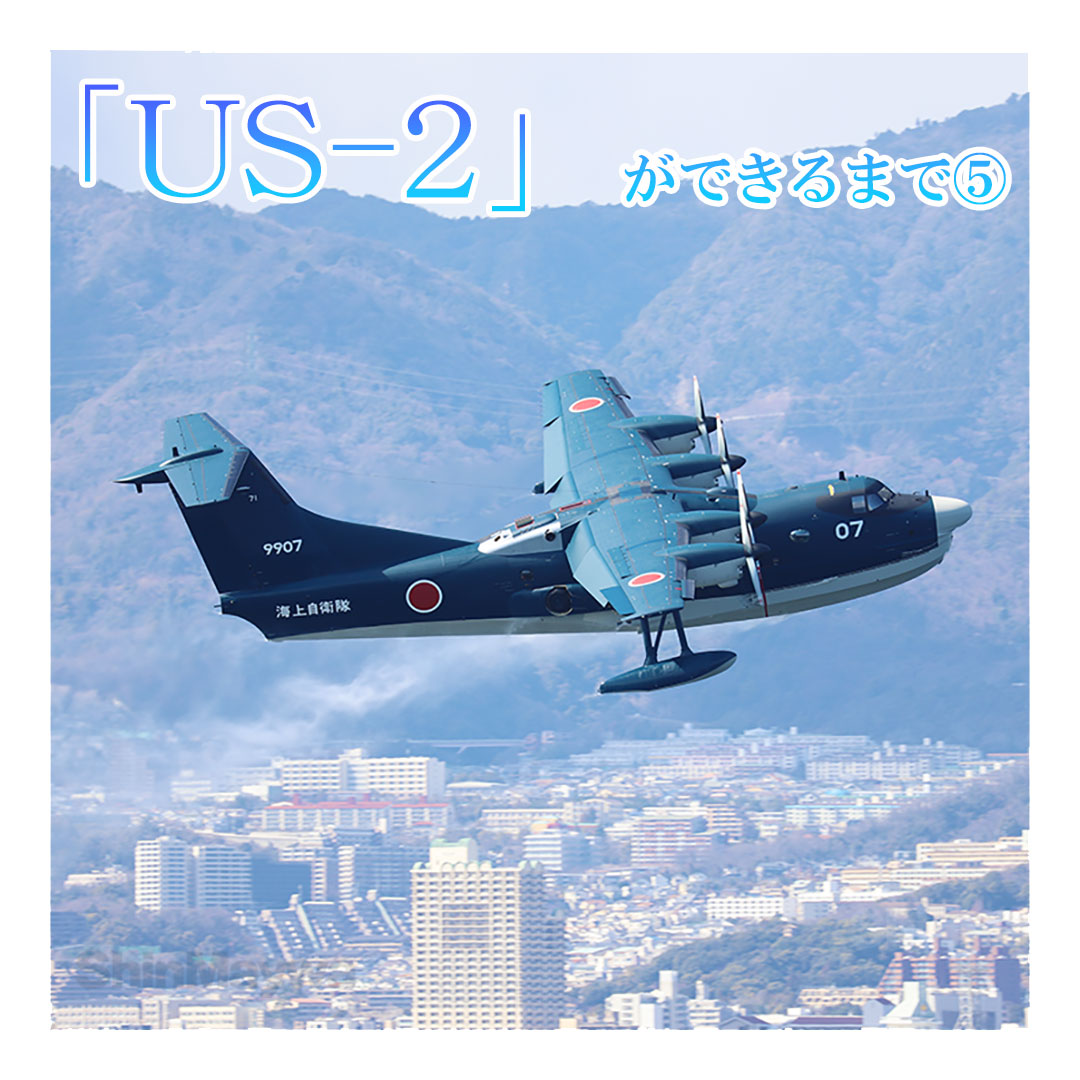
Close coverage by a professional writer
Start of construction
—Beginning assembly of the aircraft
After the coating is completed, the parts are inspected and transferred to the assembly plant. The parts are going to be assembled!
This phase is the start of construction in aircraft manufacturing.
The fuselage of a large aircraft is generally constructed as a semi-monocoque structure. The same applies to the US-2. A semi-monocoque fuselage is manufactured in the following way:
- 1Build dozens of ring frames that look like round slices of the fuselage.
- 2Line up the frames at intervals of several tens of centimeters and connect adjacent frames to each other with stringers (reinforcement materials).
- 3Attach the skin (outer panels) to the outside of the frames built in Step 2.
The assembly process for the US-2 also begins with the construction of dozens of frames. The parts that make up the frames are the foundation of the entire airframe. They cannot be used if there is even the slightest distortion or misalignment of holes during the cutting, machining, and other processes completed up to this phase.
Therefore, before joining the parts together, the entire frame is temporarily assembled and carefully checked to ensure that there are absolutely no abnormalities with the parts. After the check is completed, the parts are riveted together.
Next, stringers are attached to the assembled frame to form the framework, and skins are affixed on top of it. For the US-2, the airframe is manufactured by dividing it into about 10 blocks such as the fuselage (bottom and hull), outer wings (main wings), tail, and tail fins.
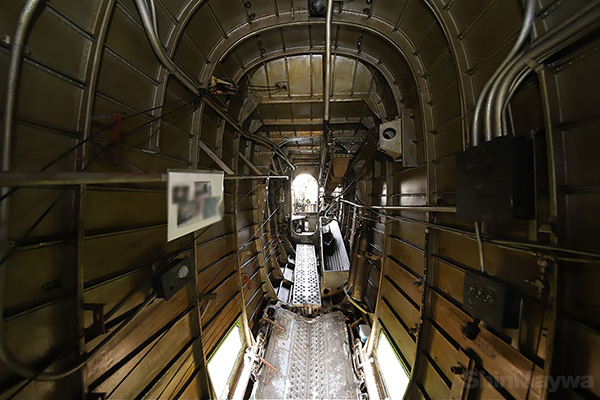 (1) The basic semi-monocoque's structure has remained unchanged for about 80 years. This is the inside of Kawanishi H8K "Emily" manufactured by Kawanishi Aircraft Company (the predecessor of ShinMaywa Industries).
(1) The basic semi-monocoque's structure has remained unchanged for about 80 years. This is the inside of Kawanishi H8K "Emily" manufactured by Kawanishi Aircraft Company (the predecessor of ShinMaywa Industries).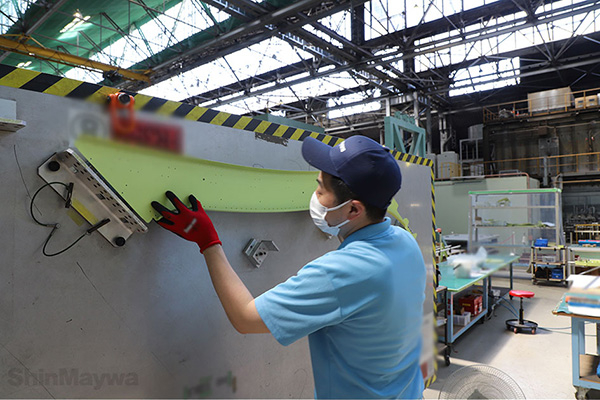 (2) Parts are mounted on a jig. Generally, this is considered the start of the construction of the aircraft. Finally, this is the start of the manufacturing of the US-2 proper!
(2) Parts are mounted on a jig. Generally, this is considered the start of the construction of the aircraft. Finally, this is the start of the manufacturing of the US-2 proper!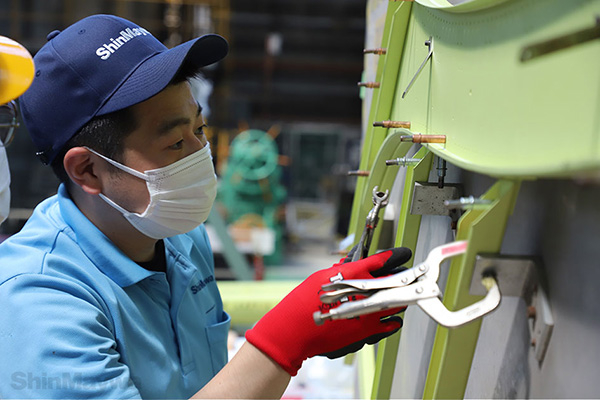 (3) To check the accuracy, the parts that the compose frame are mounted one after another on the jig and temporarily fixed with metal fittings called lock pins. The lock pins will not pass through if the positions of the holes are slightly off even by 0.1 mm.
(3) To check the accuracy, the parts that the compose frame are mounted one after another on the jig and temporarily fixed with metal fittings called lock pins. The lock pins will not pass through if the positions of the holes are slightly off even by 0.1 mm.
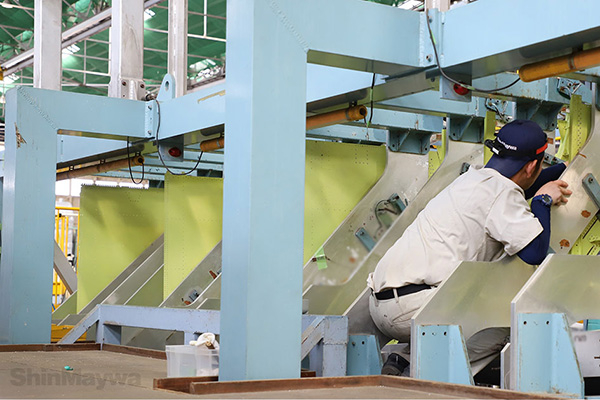 (4) The frames are lined up and fixed to the jig for assembly of the airframe.
(4) The frames are lined up and fixed to the jig for assembly of the airframe.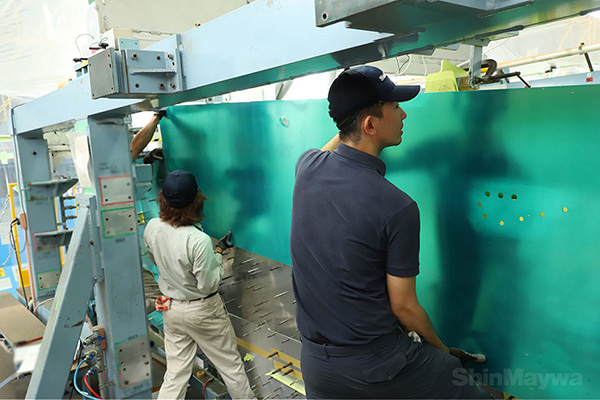 (5) Temporarily attach the skin (outer plate) to the "framework" made by combining the frame and stringers. A green film is attached to the surface of the skin to protect it from scratches.
(5) Temporarily attach the skin (outer plate) to the "framework" made by combining the frame and stringers. A green film is attached to the surface of the skin to protect it from scratches.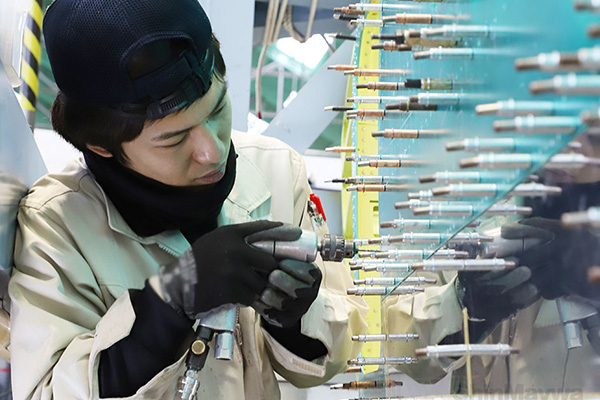 (6) After checking that the temporarily fastened skins have no problems, they are securely fixed using rivets.
(6) After checking that the temporarily fastened skins have no problems, they are securely fixed using rivets.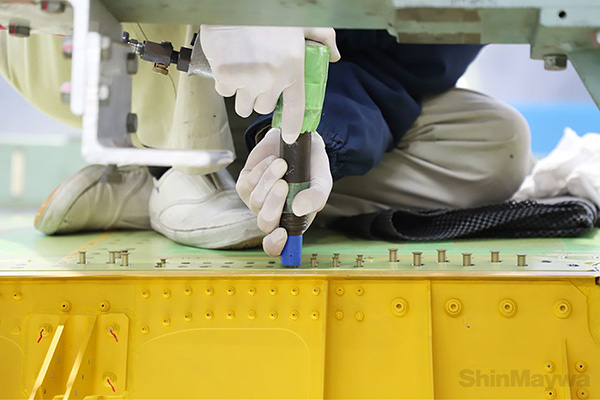 (7) Riveting with a tool. Aluminum is riveted because welding reduces the strength of the area. This technique has not changed for about 80 years since aluminum was first used in aircraft.
(7) Riveting with a tool. Aluminum is riveted because welding reduces the strength of the area. This technique has not changed for about 80 years since aluminum was first used in aircraft.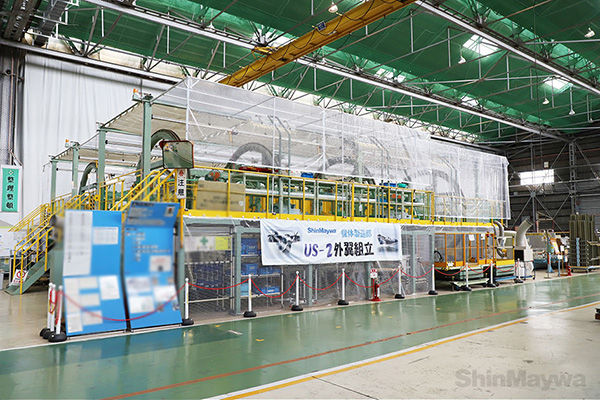 (8) The airframe of the US-2 is divided into about 10 blocks and built simultaneously. This is the whole view of the jig for assembling the outside of the main wings (the part close to the fuselage is the reference wing), which is called the outer wing.
(8) The airframe of the US-2 is divided into about 10 blocks and built simultaneously. This is the whole view of the jig for assembling the outside of the main wings (the part close to the fuselage is the reference wing), which is called the outer wing.If the parts are not accurate or the assembly procedure is incorrect, the process has to start all over again from part manufacturing. This can affect the entire construction schedule. Therefore, the assembly phase is a tense one where operators need to keep checking meticulously over and over again.
The US-2 is a large amphibian aircraft, but it is manufactured very delicately.
Writer Hidenori Itakura
- *This series is produced and published with the permission of the Ministry of Defense. Please do not reproduce the content and images of this series.


